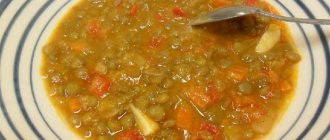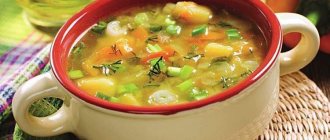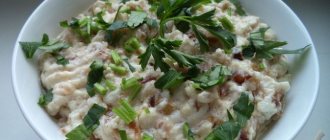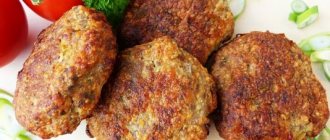Rassolnik is a very popular and beloved Russian first course. It is not much different from other soups, but sometimes the question arises about its calorie content, the overall benefits and harms, as well as who can eat it and who should pay attention to other foods.
First courses, if you expect to live a long and healthy life, must appear regularly in your diet. Maybe not every day, but at least once a month. All doctors unanimously insist on the benefits of this food, but you should be more careful with the ingredients. The main products of pickle, which can give it that extraordinary taste, are pickled cucumbers.
This delicious food has been known in Rus' for a very long time, but previously it had a different name. That kalia was prepared exclusively with fish broth or kidneys, and to add a sharp taste, housewives added pickles and tomatoes, lemons or other similar products.
Now there are more than a thousand recipes for rassolnik - as many villages, towns and families there are in Russia, there are so many recipes, since everyone prepares soup in their own way. In this regard, calorie content is assessed individually for a specific recipe. Nowadays, the essence of cooking with kidneys has disappeared, and rassolnik is now called soup cooked in any meat broth: chicken, beef, pork or turkey. Vegetarians can prepare pickle soup with water, since the main charm is in the pickles.
To prepare PP soup, you need to use only lean meat, and do not fry vegetables in oil, but simply boil them along with the rest of the ingredients. You can write out a low-calorie recipe for yourself and choose any cereal for your own pickle, that’s the beauty of such a soup. The main thing is not to forget about the main ingredients: cucumbers, cereals and potatoes.
Calorie content of classic pickle
If we take into account the version of the soup prepared according to old Russian traditions, that is, with kidneys, then it is quite low in calories. Primarily due to the fact that this offal is not particularly fatty, and also because primary broth cannot be used.
Important : the kidneys must be boiled separately for at least an hour, since they have their own specific smell, and they are added to the soup almost at the end of cooking. That is, the pickle itself is actually boiled in water.
Carrots and onions sautéed in oil account for most of the calories and carbohydrates, but you can make the most of the situation and use olive or other expensive vegetable oil, which is much healthier than sunflower or butter. The nutritional indicator for classic pickle juice is 48.1 kcal per hundred grams.
Rassolnik during lactation
A young mother certainly includes liquid food in her diet, and this is not necessarily pickle. But if you are a fan of pickled cucumber soup, you should be careful about the ingredients in it, because some foods are excluded during breastfeeding, as they are harmful to the newborn. At the same time, nutrition should remain balanced, varied, and the quality should be higher than usual.
A high salt content in food harms, first of all, the mother herself. The period of bearing a child, recovery from it and breastfeeding is a huge stress, and salty foods cause swelling and kidney problems. Even if you were completely healthy before pregnancy, this period often provokes the emergence of many diseases.
You can ask your pediatrician for advice: it is believed that pickles can cause gas in the baby. But at the same time, pickled cucumbers contain a lot of useful vitamins and substances, including iodine, iron and calcium. Moreover, this product produces a mild laxative effect (as you know, many young mothers experience constipation, and because of this, hemorrhoids appear).
If you introduce rassolnik or any other new dish into your diet, carefully monitor your child’s reaction. If the baby does not have colic and feels well, you can continue to eat little by little, alternating with other soups.
Rassolnik for children
Already from the age of 6 months, infants gradually begin to be transferred to solid food. This also applies to soups. Pickle has a distinct unusual taste, so children will definitely like this food. But you should know that you should not give them very salty foods, since the body is still growing and may simply not cope with the load on the kidneys.
Doctors do not recommend adding brine, but only cucumbers. They can be ground through a sieve or pre-soaked in cold water to remove excess salt.
The main stumbling block in this matter is cereals. If rice and oatmeal are introduced at an early age, then pediatricians recommend starting to feed barley no earlier than 3 years.
From the age of 1.5-2 years, a child should already be free to eat any healthy food, so if you introduced all foods into complementary foods gradually, you don’t have to worry that the child’s stomach will not digest pickle juice.
You also need to pay attention to sautéing the vegetables - it will be better if you do not fry the carrots and onions in oil, but add them to the soup immediately after the potatoes are cooked.
Rassolnik in chicken broth with barley and pickles
This is a traditional Slavic dish that does not require culinary skill. The main thing is to choose high-quality and fresh products. A whole chicken, or legs, wings, hearts or navels are suitable for the broth. For flavor, add peppercorns and bay leaves to the broth. Remove them when cooking is complete.
Cooking time for chicken broth is 1.5 hours.
Cooking time: 1 hour 20 minutes.
Yield: 8 servings.
Ingredients:
- chicken broth – 3 l;
- boiled chicken or giblets – 300 g;
- steamed pearl barley – 300 g;
- potatoes – 300 gr;
- sunflower oil – 100 ml;
- carrots – 100 gr;
- leeks – 3-4 pcs;
- bell pepper – 1 piece;
- pickled cucumbers – 4-5 pcs;
- cucumber pickle – 150 ml;
- salt – 0.5 tbsp;
- khmeli-suneli seasoning – 1-2 tsp;
- green garlic, onion and basil - 2 sprigs each.
Rassolnik for pancreatitis
Inflammation of the pancreas is a serious disease, and doctors require that patients adhere to a strict diet. The list of permitted products includes only the simplest, steamed or water-cooked.
Vegetables in soups should not be sautéed in oil; first courses should be simple and easily digestible. Prohibited foods include anything that can even slightly irritate the pancreas and gastrointestinal tract, including pickle juice.
Soups prepared for a person with pancreatitis should be slightly bland, so pickles and marinade are strictly prohibited for them. During the period of remission, you can talk to your doctor so that he can tell you what foods you can eat. There are special recipes for pickles for pancreatitis; all proportions indicated in them must be strictly observed.
The benefits and harms of pickle juice
Rassolnik is a regular soup, but with the addition of pickles and brine, so it has a specific, pronounced taste. Doctors insist that people eat liquid food every day, since all soups and borscht are very healthy.
One of the main products for pickle soup is cereal. It can be rice, buckwheat, oats, rolled oats, oatmeal, pearl barley or bulgur, you choose the porridge to your taste. Each of them contains a lot of carbohydrates. This is energy in its purest form, which helps you stay cheerful and happy in the second half of the day.
Fiber is also present in cereals in large quantities. It is an almost irreplaceable component of the daily diet, as it cleanses the body and gastrointestinal tract, causes a feeling of fullness for a long time, and also supplies a person with necessary vitamins. Due to the fact that rassolnik does not have a single strict recipe, you can choose any cereal for your lunch.
Pickles are an excellent source of iodine, iron, phosphorus, potassium, calcium and zinc, so you should not neglect this help for the body. This food can only harm people with a weak stomach, gastritis, ulcers or pancreatitis. Young children should also be careful with salty foods.
Otherwise, rassolnik is a set of useful vitamins, especially considering that in addition to cucumbers and cereals, they contain onions, carrots, potatoes and sometimes cabbage. All of these foods are excellent sources of fiber and good mood.
Nutritionists have identified the most harmful soup in Russia
Russian nutritionists spoke about which soups, common in the Russian culinary tradition, are the most healthy, and which ones should be eaten with great caution. This information was shared by RIA Novosti. As it turned out, it is best for health to choose light vegetable soups.
“The basis of nutrition in all clinics is vegetable soups. This is the optimal choice as a source of nutrients,” Elena Livantsova, a doctor of medical sciences and a nutritionist at the clinical nutrition clinic of the Federal Research Center for Nutrition and Biotechnology, told the agency.
This was confirmed by a gastroenterologist at the same clinic, candidate of medical sciences Vladimir Pilipenko: he explained that when cooking vegetables, microelements get into the broth - in particular, potassium and magnesium, which are useful for the stomach and intestines.
The most harmful soup turned out to be a mixed meat solyanka, which is cooked from several types of meat with the addition of pickles, olives and smoked meats. Soup prepared in this way turns out to be too fatty, and saltiness and smoked foods increase its harm to people suffering from cardiovascular diseases, hypertension and obesity.
But people who are concerned about problems with the gastrointestinal tract especially need to avoid mushroom soups, despite all their taste and aroma. “If health is compromised, then for gastroenterological patients the use of mushroom soup is not recommended, because it contains a lot of extractive substances that stimulate the digestive tract,” explains Vladimir Pilipenko. “And if the digestive tract is in an inflammatory state, then this overstimulation increases the damage of the intestinal infection.”
The survey was timed to coincide with International Soup Day, which is celebrated on April 5 - on this day it is worth recalling that soups form the basis of the diet of residents of many countries, especially Russia.
Domestic nutritionists insist that eating soups is necessary. “In general, soup is not only desirable, but mandatory for a person to feel healthy and vigorous,” says Dr. Pilipenko.
The benefits and harms of soups prepared with meat or chicken broth are the subject of heated debate among nutritionists from different countries. For example, supporters of the Paleo diet extol the beneficial properties of bone broths - they believe that this is what primitive people ate, whose eating habits supporters of this diet try to follow. Many people believe that when bones, such as beef bones, are cooked for a long time, collagen, which is useful for strengthening bones and ligaments, is transferred into the water. However, this is rather a myth: during the digestion process, proteins break down into individual amino acids, and collagen does not enter the bones and ligaments.
Particular attention is paid to chicken broth. In the West, in particular, it is considered the best remedy for colds - in the USA, chicken soup is even called “Jewish penicillin”. Indeed, there is some reason to believe that chicken broth can help alleviate the condition of a cold person - however, it still does not affect viruses. However, the amino acid cysteine, which is found in chicken broth, thins the mucus that forms in the bronchi during inflammation, which helps to cough up. In addition, chicken broth has a restorative effect and gives the body strength to fight illness.
Still, clear chicken noodles are not good for everyone. Broths should be avoided by those who suffer from gastric or duodenal ulcers, hyperacid (that is, with increased production of hydrochloric acid) gastritis, and acute pancreatitis. The fact is that broth stimulates the production of digestive enzymes and can cause heartburn in people with similar ailments.
People suffering from urolithiasis or gout should also avoid broths. Due to the fact that their metabolism is disturbed, in the body of such patients, the purines contained in the broth are deposited in the form of urates, that is, pointed salts of uric acid.
The harm of broth, of course, can be reduced.
To do this, you need to choose chicken meat or lean parts of the chicken (for example, breast) for cooking. And besides, you can use a method known to all thoughtful housewives to reduce the fat content of the broth - drain the first water.
The secondary broth contains quite a bit of fat and nitrogenous substances. In addition, by draining the first water, we get rid of radionuclides, antibiotics, nitrates, hormones and other growth stimulants that enter the chicken from feed and water. Secondary broths are also preferable for meat soups. And there is no way to reduce the harm of the mixed meat hodgepodge, because without pickles and smoked meats it will be a completely different dish.
Pickle recipe for diabetics
Diabetes is a disease that needs to be taken seriously and treated accordingly. Doctors often insist that diabetics need to constantly eat thin, light soups, as they provide the body with carbohydrates, fats and proteins.
If at first you need all kinds of recipes and help, then after a month or two, you will easily determine the glycemic level of foods and avoid junk food.
Unlike pancreatitis, diabetes requires a more gentle diet. You can eat light chicken soups with the addition of cucumbers or brine, okroshka, fish soups and even not too rich borscht. Before including a new product or dish in your diet, be sure to consult with your doctor so that he gives the go-ahead, because defeating the disease is your common goal.
Cooking time: 40 minutes
Number of servings: 12
Energy value
- proteins: 10.6 g;
- fat: 2.2 g;
- carbohydrates: 7.8 g;
- calorie content – 92.8 kcal.
Ingredients
- chicken breast – 500 g;
- water – 2 l;
- pearl barley – 500 g;
- onion – 150 g;
- carrots – 100 g;
- pickled cucumbers – 100 g;
- salt – 1 tbsp;
- olive oil – 20 ml;
- potatoes – 200 g.
Step-by-step preparation
- Boil the chicken breast - the broth based on this meat turns out to be very light and dietary, so it is suitable for diabetics, pour 200 ml immediately, since we will be stewing vegetables in it. Strain the broth, remove the meat to cool.
- We clean the carrots and onions, wash them, and then saute them with a small amount of any vegetable oil. The vegetables should be lightly browned. Add broth to the pan and simmer covered for another 10 minutes.
- Pearl barley must be washed several times in running water. Add it to the boiling broth.
- Peel the potatoes and cut them into small pieces. Add to the barley and cook the ingredients for 10 minutes.
- Grate the cucumbers, chop them finely or pass through a sieve.
- When the roast is stewed, pour it into the soup and add salt. At this time, you can begin to adjust the taste and add cucumbers a little at a time. Rassolnik should not be completely bland, but also not have a strong taste.
- Cut the chicken meat into cubes and add to the soup. Cook everything together for another 10 minutes, then turn off the heat, cover and let the food stand for a quarter of an hour.
The soup should be served with a small amount of cream or sour cream, herbs and fresh bread. Diabetics should know that raw carrots have a glycemic index (GI) of about 35 units, while when cooked it almost doubles. You can eat carrots in small quantities, but if you are afraid for your health, it is better to avoid this vegetable.
Rassolnik is a very healthy dish, in principle, like any soup. If you do not overuse brine and pickles, then both children and adults can enjoy this food. You can find many recipes for homemade pickles, as well as step-by-step photos and videos, and each cook is right in his own way. People who have diabetes or pancreatitis should be more careful about their diet, but after time, you will know exactly which foods to avoid.
Recipe Rassolnik. Calorie, chemical composition and nutritional value.
Nutritional value and chemical composition of “Rassolnik”.
The table shows the nutritional content (calories, proteins, fats, carbohydrates, vitamins and minerals) per 100 grams of edible portion.
| Nutrient | Quantity | Norm** | % of the norm in 100 g | % of the norm in 100 kcal | 100% normal |
| Calorie content | 37.6 kcal | 1684 kcal | 2.2% | 5.9% | 4479 g |
| Squirrels | 1.9 g | 76 g | 2.5% | 6.6% | 4000 g |
| Fats | 0.8 g | 56 g | 1.4% | 3.7% | 7000 g |
| Carbohydrates | 5.1 g | 219 g | 2.3% | 6.1% | 4294 g |
| Alimentary fiber | 0.5 g | 20 g | 2.5% | 6.6% | 4000 g |
| Water | 90.7 g | 2273 g | 4% | 10.6% | 2506 g |
| Ash | 0.559 g | ~ | |||
| Vitamins | |||||
| Vitamin A, RE | 137.9 mcg | 900 mcg | 15.3% | 40.7% | 653 g |
| Retinol | 0.001 mg | ~ | |||
| beta carotene | 0.824 mg | 5 mg | 16.5% | 43.9% | 607 g |
| Lutein + Zeaxanthin | 0.601 mcg | ~ | |||
| Vitamin B1, thiamine | 0.033 mg | 1.5 mg | 2.2% | 5.9% | 4545 g |
| Vitamin B2, riboflavin | 0.06 mg | 1.8 mg | 3.3% | 8.8% | 3000 g |
| Vitamin B4, choline | 7.15 mg | 500 mg | 1.4% | 3.7% | 6993 g |
| Vitamin B5, pantothenic | 0.038 mg | 5 mg | 0.8% | 2.1% | 13158 g |
| Vitamin B6, pyridoxine | 0.066 mg | 2 mg | 3.3% | 8.8% | 3030 g |
| Vitamin B9, folates | 4.058 mcg | 400 mcg | 1% | 2.7% | 9857 g |
| Vitamin C, ascorbic acid | 1.09 mg | 90 mg | 1.2% | 3.2% | 8257 g |
| Vitamin E, alpha tocopherol, TE | 0.063 mg | 15 mg | 0.4% | 1.1% | 23810 g |
| Vitamin H, biotin | 0.112 mcg | 50 mcg | 0.2% | 0.5% | 44643 g |
| Vitamin K, phylloquinone | 1.1 mcg | 120 mcg | 0.9% | 2.4% | 10909 g |
| Vitamin RR, NE | 1.1366 mg | 20 mg | 5.7% | 15.2% | 1760 g |
| Niacin | 0.136 mg | ~ | |||
| Macronutrients | |||||
| Potassium, K | 123.2 mg | 2500 mg | 4.9% | 13% | 2029 |
| Calcium, Ca | 6.49 mg | 1000 mg | 0.6% | 1.6% | 15408 g |
| Silicon, Si | 3.904 mg | 30 mg | 13% | 34.6% | 768 g |
| Magnesium, Mg | 7.37 mg | 400 mg | 1.8% | 4.8% | 5427 g |
| Sodium, Na | 87.98 mg | 1300 mg | 6.8% | 18.1% | 1478 g |
| Sera, S | 22.06 mg | 1000 mg | 2.2% | 5.9% | 4533 g |
| Phosphorus, P | 27.5 mg | 800 mg | 3.4% | 9% | 2909 g |
| Chlorine, Cl | 9.42 mg | 2300 mg | 0.4% | 1.1% | 24416 g |
| Microelements | |||||
| Aluminium, Al | 81.6 mcg | ~ | |||
| Bor, B | 32.1 mcg | ~ | |||
| Vanadium, V | 12.31 mcg | ~ | |||
| Iron, Fe | 0.285 mg | 18 mg | 1.6% | 4.3% | 6316 g |
| Yod, I | 0.62 mcg | 150 mcg | 0.4% | 1.1% | 24194 g |
| Cobalt, Co | 0.787 mcg | 10 mcg | 7.9% | 21% | 1271 g |
| Lithium, Li | 3.198 mcg | ~ | |||
| Manganese, Mn | 0.0362 mg | 2 mg | 1.8% | 4.8% | 5525 g |
| Copper, Cu | 52.46 mcg | 1000 mcg | 5.2% | 13.8% | 1906 |
| Molybdenum, Mo | 1.689 mcg | 70 mcg | 2.4% | 6.4% | 4144 g |
| Nickel, Ni | 0.81 mcg | ~ | |||
| Rubidium, Rb | 53 mcg | ~ | |||
| Selenium, Se | 1.375 mcg | 55 mcg | 2.5% | 6.6% | 4000 g |
| Strontium, Sr | 0.94 mcg | ~ | |||
| Fluorine, F | 7.1 mcg | 4000 mcg | 0.2% | 0.5% | 56338 g |
| Chromium, Cr | 0.71 mcg | 50 mcg | 1.4% | 3.7% | 7042 g |
| Zinc, Zn | 0.1943 mg | 12 mg | 1.6% | 4.3% | 6176 g |
| Zirconium, Zr | 0.11 mcg | ~ | |||
| Digestible carbohydrates | |||||
| Starch and dextrins | 0.879 g | ~ | |||
| Mono- and disaccharides (sugars) | 2.1 g | max 100 g | |||
| Glucose (dextrose) | 0.31 g | ~ | |||
| Sucrose | 0.758 g | ~ | |||
| Fructose | 0.165 g | ~ | |||
| Essential amino acids | 0.086 g | ~ | |||
| Arginine* | 0.021 g | ~ | |||
| Valin | 0.012 g | ~ | |||
| Histidine* | 0.004 g | ~ | |||
| Isoleucine | 0.011 g | ~ | |||
| Leucine | 0.014 g | ~ | |||
| Lysine | 0.015 g | ~ | |||
| Methionine | 0.003 g | ~ | |||
| Methionine + Cysteine | 0.006 g | ~ | |||
| Threonine | 0.011 g | ~ | |||
| Tryptophan | 0.004 g | ~ | |||
| Phenylalanine | 0.011 g | ~ | |||
| Phenylalanine+Tyrosine | 0.02 g | ~ | |||
| Nonessential amino acids | 0.161 g | ~ | |||
| Alanin | 0.013 g | ~ | |||
| Aspartic acid | 0.03 g | ~ | |||
| Glycine | 0.011 g | ~ | |||
| Glutamic acid | 0.049 g | ~ | |||
| Proline | 0.01 g | ~ | |||
| Serin | 0.012 g | ~ | |||
| Tyrosine | 0.009 g | ~ | |||
| Cysteine | 0.003 g | ~ | |||
| Sterols (sterols) | |||||
| Cholesterol | 1.8 mg | max 300 mg | |||
| Saturated fatty acids | |||||
| Saturated fatty acids | 0.2 g | max 18.7 g | |||
| 14:0 Miristinovaya | 0.005 g | ~ | |||
| 16:0 Palmitinaya | 0.156 g | ~ | |||
| 18:0 Stearic | 0.035 g | ~ | |||
| Monounsaturated fatty acids | 0.36 g | min 16.8 g | 2.1% | 5.6% | |
| 16:1 Palmitoleic | 0.054 g | ~ | |||
| 18:1 Oleic (omega-9) | 0.301 g | ~ | |||
| 20:1 Gadoleic (omega-9) | 0.002 g | ~ | |||
| Polyunsaturated fatty acids | 0.133 g | from 11.2 to 20.6 g | 1.2% | 3.2% | |
| 18:2 Linolevaya | 0.127 g | ~ | |||
| 18:3 Linolenic | 0.01 g | ~ | |||
| Omega-6 fatty acids | 0.1 g | from 4.7 to 16.8 g | 2.1% | 5.6% |
The energy value of Rassolnik is 37.6 kcal.
Primary Source: Created in the application by the user. Read more.
** This table shows the average levels of vitamins and minerals for an adult. If you want to know the norms taking into account your gender, age and other factors, then use the “My Healthy Diet” application.










